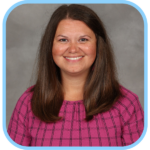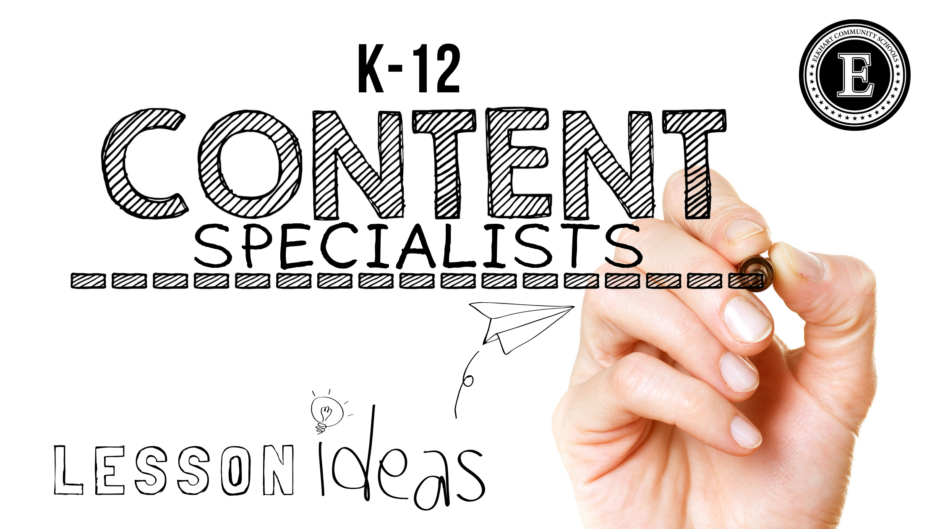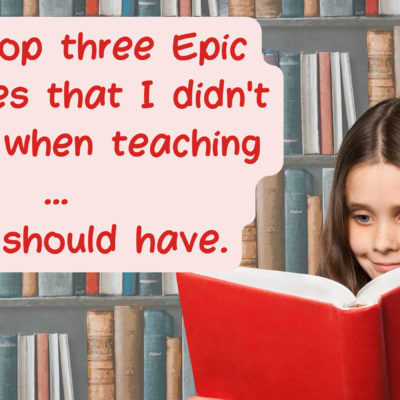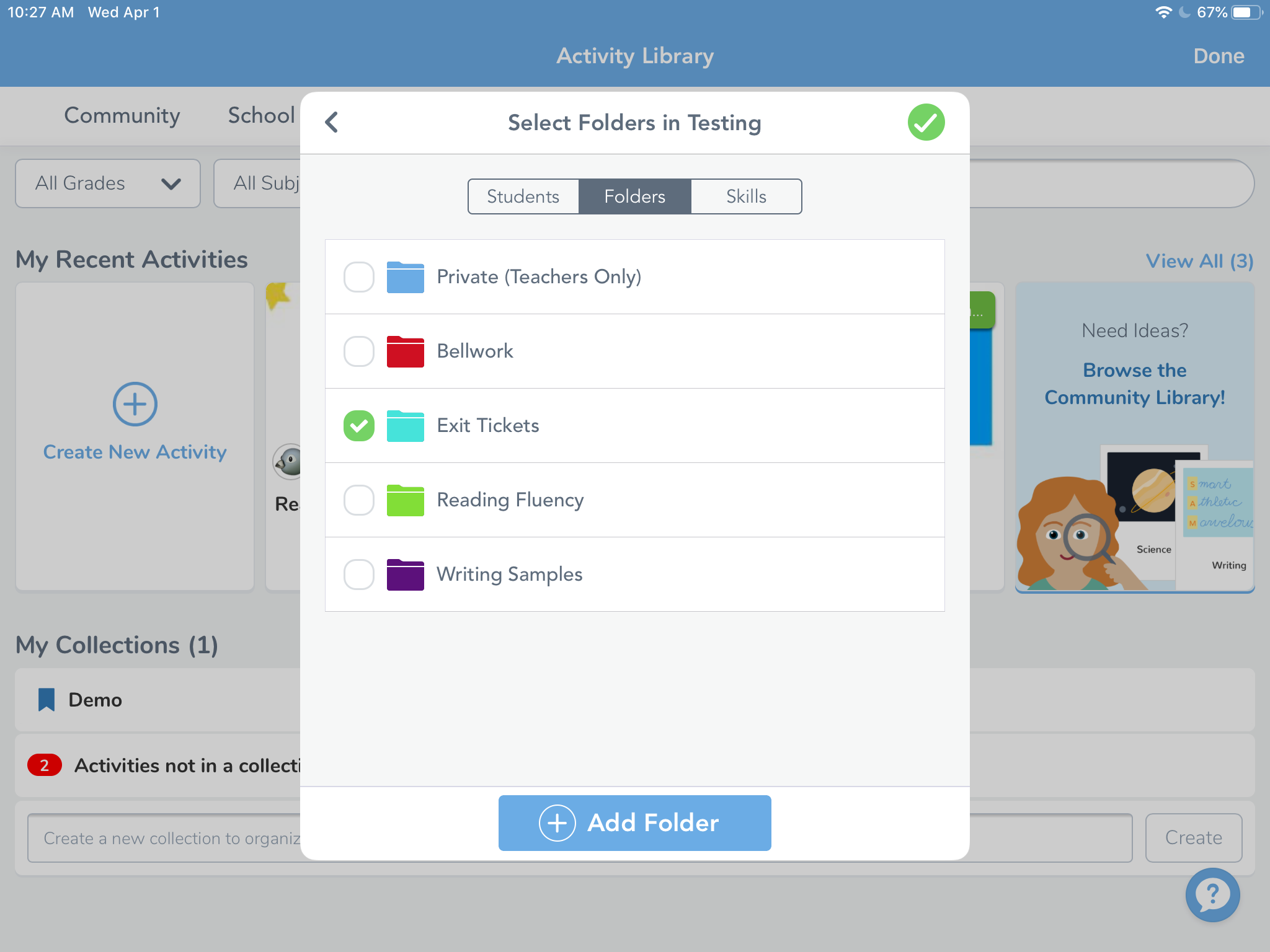Our Content Specialists have created blog posts. Below is a short “tasting” of each blog article and you can click to read more! Enjoy the tasting.
Elementary K-6
Closing the Gap: Reading Strategies for ALL Students | Anita Pratt

K-2 Language Arts Content Specialist
The Science of Reading is gaining recognition and support from more and more educators across the country. Research is suggesting that our brains are not wired to learn to read the same way we learn to talk. We learn to talk by listening to others and following their lead, but reading has to be explicitly taught. Phonics has to be systematically taught in order for the majority of our students to learn to read. What classroom strategies can we use to ensure all students learn to read?
Smekens, Savvas, and PLC, Oh, My! | Suzanne Holcomb

3-6 Language Arts Content Specialist
Binders, teachers manuals, websites, blogs, professional development, you name it, we have it to use to help us teach our students to the best of our ability. The question is, how do we make it all make sense? How do we put it together to make lesson planning easy and efficient? How do we make sure that we are best serving our students? Read on to find suggestions, tips and tricks, and ideas about how to weave all of these resources together to build strong lessons in your elementary classroom.
How Strategies and Research Can Guide Your Math Instruction | Amber Genovese

K-2 Math Content Specialist
What does science tell us is the best way to teach primary math? Join me for a session on the importance of building number sense and following research based strategies for teaching our youngest learners.
First we will dig into what the research says, and the why behind what we do. Next we will see some strategies in action! Children learn best through play so we will include some engaging games and activities to help students build a solid foundation for learning the language of math!
Integrating Small Group Instruction with Math Expressions | Denise Demeter & Christina Herrick

3-6 Math Content Specialist

K-6 Sp.Ed. Content Specialist
Have you struggled trying to incorporate small group instruction with Math Expressions? How can you meet the needs of all levels within your classroom while using Math Expressions? Small groups are possible and can be successful with the Math Expression curriculum! Using small math group instruction will meet the needs/levels of all students!
It can be overwhelming trying to fit in all the essential Math Expression elements as well as meeting the needs/levels of all students. But it is possible and can be done with minimal extra planning!
Making Life Easier While Engaging Students with Mystery Science | Courtney Moreno

K-6 Science Content Specialist
Science is an essential part of students’ education. It builds background knowledge and vocabulary that equips students with the tools they need to tackle grade level, informational texts. Mystery Science is a video based science curriculum provided by the district that is easy to use, engages students, and contains connected lessons organized within units of study. This resource allows teachers to incorporate science into their classroom with very little effort and a whole lot of gain.
Tme for Social Studies | Peggy DeLanghe

K-6 Social Studies Content Specialist
Do you struggle having enough time to teach Social Studies?
At the 2022 DOT conference, I shared ways to crosscut your Social Studies Standards with your literacy and mathematics standards. (For more information, check this slideshow out or send me a message at pdelanghe@elkhart.k12.in.us to schedule a meeting.) Now that we have spent time thinking about crosscutting, the question is, how do I engage students in lessons and activities that meet standards for both social studies and literacy or mathematics without taking any more class time.
SIOP: Don’t Overthink It | Shelby Eby

K-6 EL Content Specialist
Now that we’ve been SIOP trained, it can feel overwhelming to get components of SIOP into every lesson–like SIOP is just one more thing to do. But we HAVE to do it- our lessons must be accessible to every student. This blog post is meant to be a quick reference and a wealth of teaching resources that can help you quickly & easily ensure that your lessons are SIOP lessons, even when life is busy and time is limited. Many of the components interlock, but keep in mind that the district focus for 2022-2023 is implementing the lesson preparation component.
K-12
See Things Differently (Through Art) | Tara Mix

K-12 Art Content Specialist
Have you ever heard the quote, ‘Impatience is a lack of Understanding?’ It is from a book by John Ortberg where he describes that if we knew that the older couple driving in front of us just found out the husband has cancer, we wouldn’t be so upset if they are driving slowly. When we know that Vincent Van Gogh painted Starry Night while in the asylum after he cut off his ear, we look at it differently. We have more understanding. When we understand things, we see them differently.
Secondary
Why DOK Matters | Dr. Mandy Davis

7-8 ELA Content Specialist
IEP, PLC, ILP, IDOE, ILEARN, ESSA, blah, blah, blah! We have all probably heard enough educational acronyms to make us want to scream! In this blog we explore why DOK (Webb’s Depth of Knowledge) is more than just a bunch of creatively arranged letters; it is actually a very important concept for middle school language arts teachers to know and use.
Helping Students Visually Represent Math Problems | Rick Ankney

7-8 Math Content Specialist
Certainly, Elkhart Elementary Schools, and a majority of U.S. Elementary Schools have a great deal of hands-on concrete mathematical learning activities. As we transition to the middle years the logical process would be to develop pictorial representations of math concepts, and then finally off to the abstract high school math.
Quicker Change Ever? | Alex Holtz

9-12 Math Content Specialist
We all want the best for our students. None of us would stay in education for an extended period unless that is true. As teachers in a time period with quick advancements in technology, we have to adapt our teaching practices and topics we emphasize more often and more thoroughly than those who taught before us.
The Power of Co-Teaching for PBL | C. Shook, B. Townsley, & S. Foster

9-12 Media Content Specialist

9-12 ELA Content Specialist

9-12 Social Studies Content Specialist
As educators we understand that while new instructional approaches can be exciting, they can also be daunting. An initiative that could be like this is Project Based Learning, or PBL. PBL gives students the opportunity to learn and grow through engaging, real world activities. The process can transform how teachers teach, students learn, and community partners connect. All of this sounds wonderful, but for some, doing this alone can be overwhelming. If you feel this way, then finding a collaborative partner might be the answer. PBL is a natural avenue for collaboration, so working with your school librarian might just be the jumpstart you need to give PBL a try.
As a librarian, Colleen wants to be involved in teaching and learning, so she offers to “push in” in any way the classroom teacher feels it best fits. Dr. Greg Conderman explains in his article “Considerations and Recommendations for Effective Literacy Co-Teaching” that educational researchers have found that the three main parts of co-teaching are co-planning, co-teaching, and co-assessing.
Using Driving Questions and Need to Knows to Guide Instruction | Eric Jantzen

9-12 Science Content Specialist
The goal of both the Driving Question and the Need to Know Questions is to help students answer the dreaded, “Why do I need to know this?” Well-constructed questions – from both the teacher and the students – can help provide the answer.
In a perfect world, every class activity in a unit of study (PBL or traditional) should help answer the Driving Question. This means that it needs to be broad enough to be inclusive, but still be applicable to the students’ real lives (now or in the future).
Collaboration Tools in Canvas | Nick Seidl

9-12 Engineering Content Specialist
Most secondary teachers at this point have discovered the power of Canvas as a tool to facilitate the distribution and collection of class materials, and to provide feedback to students. But there are some other tools that can help students work in collaborative groups. This can be helpful for anything from small group activities up to full-scale PBL.
International Business Cross-Curricular Activities | Bruce Baer

9-12 Business Content Specialist
A large challenge we have faced within our school of study is how we can add international business activities, cross-curricular, throughout the School of Business and beyond. I know International Business may be outside of your comfort zone if you are a Math or English teacher, for example. I would like to share with you some simple activities you could add to your classroom that are not extremely time consuming, but can introduce this era to students. Different examples of activities that you can choose from to implement in your classroom are listed below.
No More Copies: Effectively Using Google in Canvas | Jen Higley

9-12 FACS Content Specialist
Tired of making copies everyday? Or are you tired of students struggling with finding docs in their messy and unorganized Google Drives? Canvas makes it very easy to solve both of these problems with the Google Drive integration. In our session, we will show you how to make your life a bit simpler by integrating Google Drive into your Canvas courses. Students will have an easier time with finding items and being more organized, freeing you up to focus on instruction.
Come see any of these content specialists present at the summer Do One Thing (DOT) Conference, held in Elkhart at Elkhart High School on August 7 & 8, 2023. Register today!



